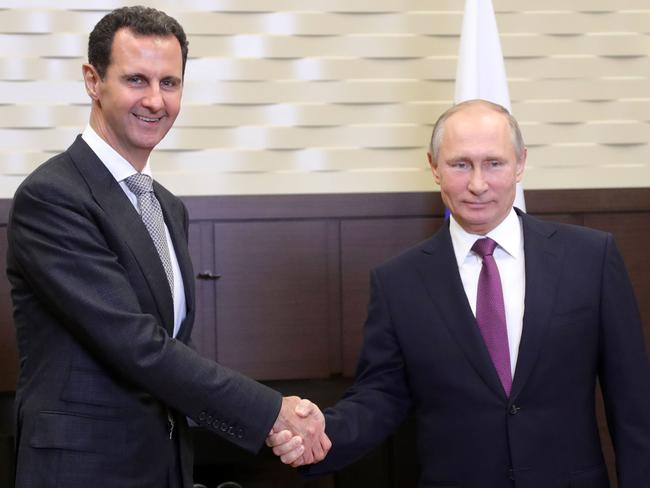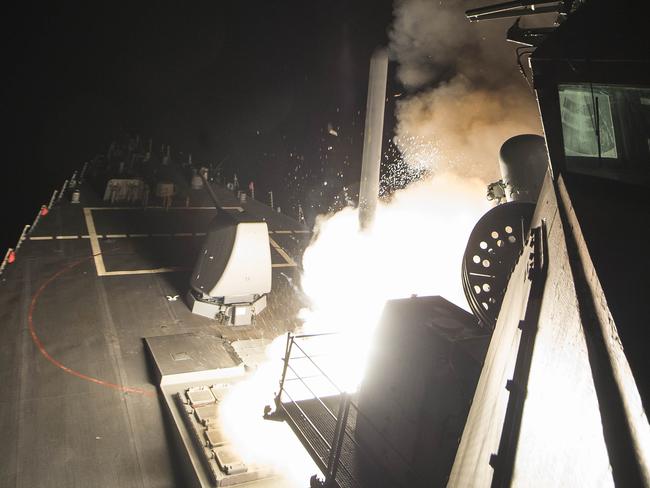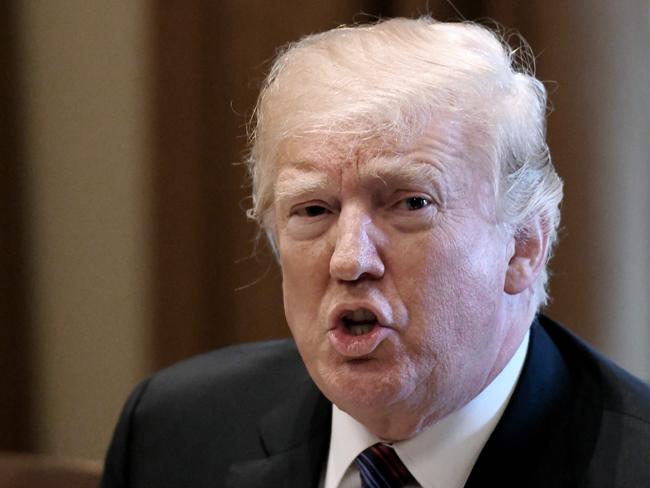US vs Syria: How possible air strikes could unfold
DONALD Trump has warned Russia to get ready for US missiles to be fired at Syria. But a strike won’t end well and could have even worse consequences.

US PRESIDENT Donald Trump has delayed a decision on whether to launch a military strike against Syria in retaliation for an alleged chemical attack on civilians.
Mr Trump warned Syrian ally Russia that military strikes could happen “very soon or not so soon at all” as the White House confirmed the President would consult further with allies before taking any action.
However, many are cautioning against taking action prematurely with Defence Secretary Jim Mattis warning that such an attack carried the risk of spinning out of control.
Mr Mattis also urged caution ahead of a decision on how to respond to an attack against civilians that US officials are increasingly certain involved the use of banned chemical weapons.
Syrian President Bashar al-Assad denies his regime is behind last week’s horrifying attack in Douma, near the capital of Damascus, where at least 43 died and more were hospitalised struggling to breathe.

White House press secretary Sarah Huckabee Sanders also said no final decision had yet been made over what course of action to take on Syria following the attack.
“We are continuing to assess intelligence and are engaged in conversations with our partners and allies,” she said.
In tweets posted earlier this week, Mr Trump indicated he was committed to bombing Syria but later suggested he was awaiting further advice and assessment.
Russia vows to shoot down any and all missiles fired at Syria. Get ready Russia, because they will be coming, nice and new and “smart!†You shouldn’t be partners with a Gas Killing Animal who kills his people and enjoys it!
— Donald J. Trump (@realDonaldTrump) April 11, 2018
“We’re looking very, very seriously, very closely at the whole situation,” he said.
The President later appeared to change his tune, saying a strike might not happen at all.
Never said when an attack on Syria would take place. Could be very soon or not so soon at all! In any event, the United States, under my Administration, has done a great job of ridding the region of ISIS. Where is our “Thank you America?â€
— Donald J. Trump (@realDonaldTrump) April 12, 2018
COMBINED OPERATION
The US, France and Britain have been in extensive consultations about launching a military strike as early as the end of this week, US officials have said.
A joint military operation, possibly with France rather than the US in the lead, could send a message of international unity about enforcing the prohibitions on chemical weapons.
It comes as Mr Macron said France has proof that the Syrian government launched chlorine gas attacks and said France would not tolerate “regimes that think everything is permitted”.
Russian politicians have already warned Washington that Moscow would view an air strike on Syria as a war crime and that it could trigger a direct US-Russian military clash.
It wouldn’t be the first time the US has taken action on Syria.
Mr Trump last year responded to a sarin gas air strike by Mr Assad on civilians by launching 59 missiles at an airfield in western Syria.
The US government said it had crucial evidence the regime was behind the attack.

RISKY OUTCOMES
According to former ABC Middle East correspondent Anne Barker, the US now faces three options on Syria.
The US could undertake a symbolic air strike, a sustained assault or in the worst case scenario launch all out war.
However, her analysis warns all options have repercussions and the US should be prepared for any outcome.
In the first instance while a symbolic strike is the easier and most likely course of action, it might not have a big impact given last year’s bombing only destroyed an air strip, aircraft and refuelling station.
A sustained assault risks greater damage to the Syrian government but risks Russian retaliation.
This, Barker writes, “risks bringing the US and Russia into direct warfare, which could lead to an escalation of the conflict outside Syria’s borders”.
The last option is by far the worst and could see the conflict spread beyond Syria and given recent tensions between Israel and Iran, “could be a precursor to WWIII”.

LASTING DAMAGE
A revealing analysis by the Washington Post reveals just how much impact a US strike could have.
The analysis shows a larger strike on multiple sites could inflict lasting damage to Syria’s military and damage infrastructure that’s vital for Assad’s ability to keep his grip on power.
Rebecca Hersman, a former top Pentagon official now at the Center for Strategic and International Studies, said the issue was the US wasn’t consistent in reacting to reports of chemical weapons use.
This allowed Mr Assad to think he can continue to use his weapons without reproach.
If the US does decide to launch a broader attack, it could choose to conduct initial precision strikes to debilitate ground air defence.
It could also target command and control nodes, munitions and helicopters while strikes on chemical factories and ports could hit the Syrian economy.



